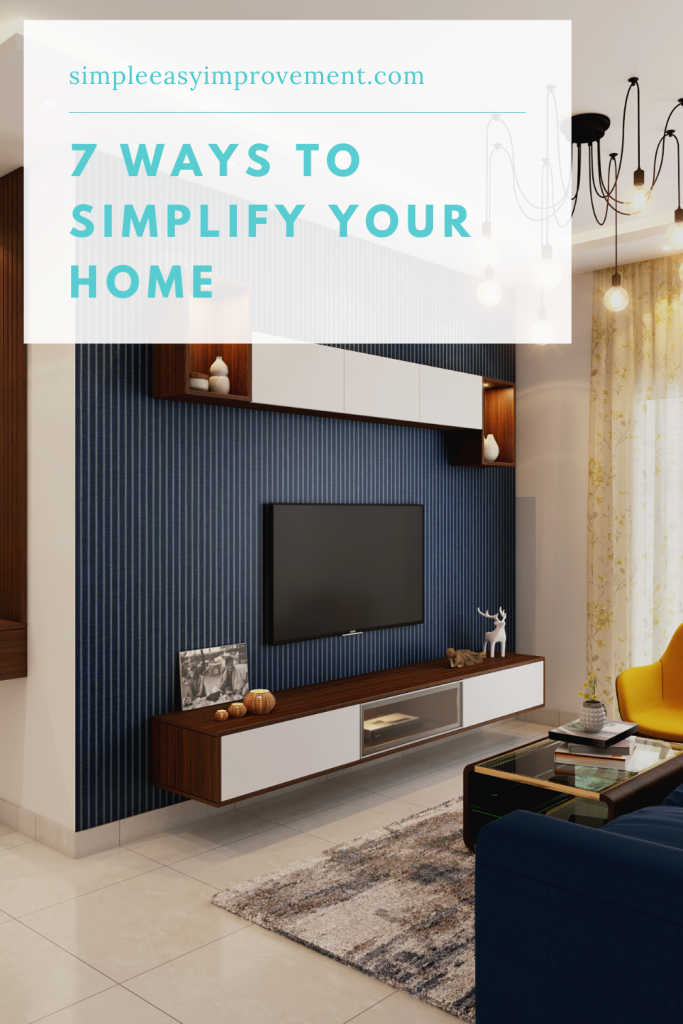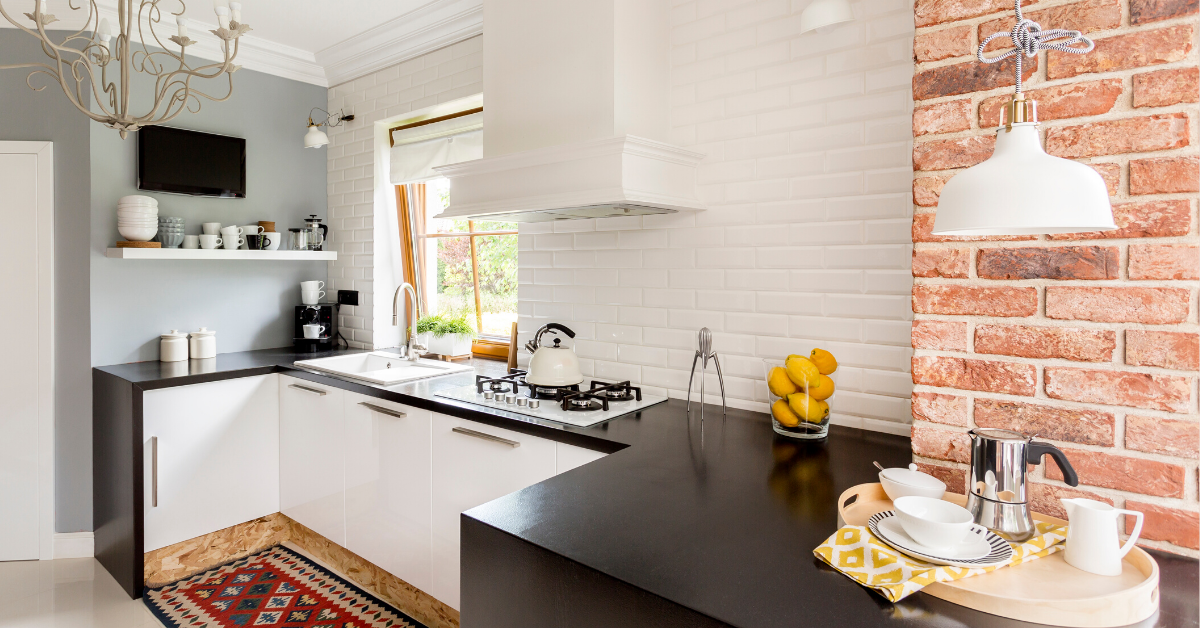
It doesn’t really matter if you live in a grand house or a small one, whether your decoration style is modern or traditional. You can fill it up with expensive furniture and luxurious items, but a house cannot become a home unless you are comfortable in it. You can only be comfortable in your home when it has everything you need, and nothing more than that. That’s why this 7 ways to simplify your home guide will help you feel more comfortable and make your home look squeaky clean.
These days, more and more people are opting for a simpler lifestyle. ‘Minimalism’ and ‘simplicity’ are the two most talked-about concepts of living nowadays; everyone is electing to spend more time with their loved ones and less time at work, spend less than they can afford and own less than they can afford to. The modern lifestyle is healthier and less complicated these days, with homes that are free from clutter, excessive belongings, and unnecessary spending.
If you, too, are longing for the simple life, here are some tips that might be helpful.
- Try the “KonMari” Method
The “KonMari” is a useful trick in these 7 ways to simplify your home Guide. Organizational consultant Marie Kondo changed millions of lives all around the world with her amazing ‘KonMari’ Method, in which she asked us to remove everything from our homes that “doesn’t spark joy in you”. This is a special phrase that can help everyone decide what they really want to keep in the house and what we should throw out.
When tidying up the house or trying to declutter, we are often confused about which of our belongings we should save – for regular use or for sentimental value, and which we need to forgo. According to Marie Kondo, anything that doesn’t “spark joy” in us should go, because they actually have no real value for us. This technique can be applied to any aspect of our life, from donating old clothes that don’t fit us anymore, too old baking trays you no longer use, as well as toxic relationships that no longer give us happiness.
The “KonMari” method of organization is a lengthy process, where you go through each and every possession in the house and decide whether it “sparks joy” in you, or if you really want to keep it. You have to physically hold every single item in your house, ponder over them, then decide to keep or discard them. You can learn all the details of the “KonMari” method here.
- Reduce your Furniture
We don’t really need every single piece of furniture that we have in the house. Some of them are actually chosen because they complement our décor style or because they look good to us. Entertainments centers, for example, have become completely unnecessary these days because most of us prefer to wall mount our television; almost no one these days have DVD players, a collection of DVDs or large standing speakers connected to the television.
In the same way, coffee tables come with small seats hidden under them that can be pulled out only when you need extra seating. Couches can be converted into a bed in the blink of an eye so you might be able to use your extra bedroom for something else entirely; dressing tables and vanity tables have almost become extinct since you can create space behind long mirrors. Multi-functional furniture has taken over the modern houses by storm so that you can have more empty spaces in the house but all the furniture you need.
- Keep Everything Covered
A simple but really good trick in these 7 ways to simplify your home guide. Every bit of personal belongings and possessions that you own needs to be put inside drawers, cupboards, and cabinets. The more scattered your belongings are, the more cluttered your rooms are going to look. Whether it is your clothes, your jewellery, your makeup or your shoes – keeping them open and in view will make your bedroom look messy and disorganized. Hidden away inside drawers and cabinets, your bedroom will look peaceful and serene, and you’ll be able to rest better.
It’s the same all around the house. In the living room, the dining room, the kitchen or the family room, it is better to choose furniture that has a lot of doors and drawers, as opposed to open shelves. It is especially important that your kitchen has more closed cabinets and drawers than open shelves, especially if it is an open kitchen.
Only a handful of items should be on display around the house, and only by design. Whatever you want to show off needs to be carefully chosen for their aesthetically pleasing look, not because they are functional. What is practical and necessary in your life should be tucked away from plain sight, only to be taken out when needed.
- Keep your Surfaces Clear
Your dining table, coffee table, kitchen counters, and study table surfaces should always be kept clear at all times. Decorative items, knick-knacks, and crafts should have their own space inside cabinets or cases, but not on table surfaces. These are practical spaces in your home that you’ll need to serve food, do your work or entertain your guests. They need to be kept clear always for when you need to use them.
However, you can put one or two items on these surfaces, for decorative purposes, but no more than that. A simple bowl of fruit, a small houseplant, a candle, a colorful bowl of candies, a table runner, a vase full of flowers – these are the kind of items you can keep on your table surfaces, but nothing else. A table surface filled with your regular items will only make a mess, and make your whole house look disorganized.
- Keep White Space
For all the expensive furniture, artwork and décor items that you have around the house, it is very important that you also maintain some white space in your home. “White space” basically means the space in your home that is not burdened with too many furniture, decorations or even artwork hanging from the walls. It could be a corner of the house, a particular wall, your bedside table, your dining table, the mantle, your desk or the coffee table.
You can put only one thing on these surfaces and locations, and nothing more than that. If it’s a wall you are thinking about, paint it in a different color than the rest of the room and hang a single painting or artwork on it, instead of a selection of frames. If you are thinking of creating white space around your fireplace, keep the mantle free of any knick-knacks and put only a houseplant.
- Use More Natural Objects
Instead of expensive decorative items, try to include a little bit of nature into your home. Houseplants, fresh flowers in vases, wind chimes made from wood, wooden furniture, décor items made from natural rocks and shells, branches and twigs, craft made from acorns and pine cones, wooden frames around mirrors and photos, glass and wooden vases – these will make your rooms feel more natural and fresh.
Besides, décor items made from such natural objects also happen to be less expensive than anything made from artificial materials. These decorative items are more common in homes during fall or winter, but you can make them last for months with special care.
- Concentrate only on One Collection
We all have a hobby or a passion, and it is perfectly all right to be a collector of something specific. However, sometimes, it is extremely easy to go astray and end up with more than we can store or place around the house, which is neither good for your expenses nor for your home.
If you are passionate about something or if you want to collect something, stick to a particular kind of object. If you love to read, buy and collect books; build a massive bookcase on one of the walls and add to your library; if it is music you are interested in, only collect records or CDs. When you concentrate on more than one hobby or more collection at the same time, you’ll only end up with more belongings than you have space in your home.
It is very easy to get your home cluttered up, buy more than you need and not know where to put everything. The best way to live is to live a simple life, where you spend more time on what you want from your life than on gathering more possessions; the simple life is where people spend time together with their families instead of thinking more about money and personal belongings. A simple home, also, is crucial for simple living, because if you are not comfortable in your home, you cannot have a happy life.



